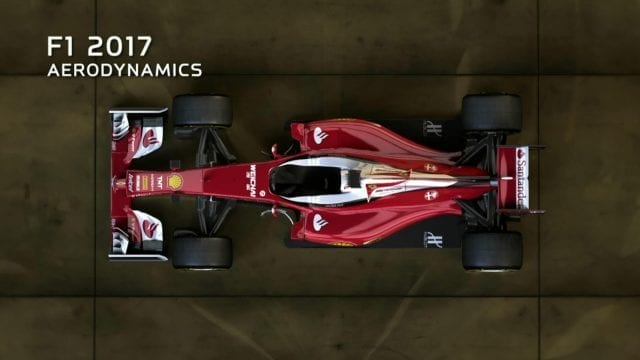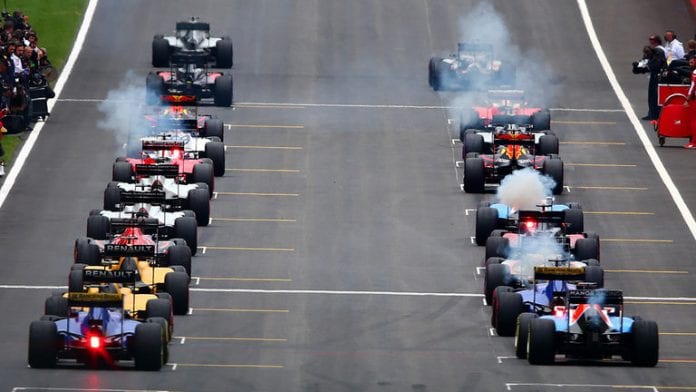Formula 1 is going to change this year, mainly because of the decision to change aero regulations. Due to the new set of rules, the Formula One cars will be faster and more aggressive than before. However, the chassis is not the only that that will be modified. We expect to see the fin-style engine cover in 2017 and under these covers, some big developments will be seen.
F1 decided to get rid of engine token system and with it the limited development, because of which constructors such as Honda couldn’t enhance their vehicle performances. However, new restrictions regarding weight and materials are set in order to limit the manufacturers from producing expensive alternatives. Moreover, teams will be able to nominate five fuel blends for the new season, and this is the part of new fuel restrictions. Only two out of those five can be used on a race weekend.
Tokens
When it was introduced ahead of the new turbo hybrid era, the token system seemed to be a right move, but it turned out to be quite controversial. It was supposed to police powertrain development through to 2024. With it, the manufacturers couldn’t spend much money, and the progress was limited.
This move couldn’t help manufacturers to bridge the gap between themselves and Mercedes that was the best one in F1. In 2017, a new approach has been agreed upon – the restrictions are in terms of dimension and weight, and hopefully, this will solve the problem and successfully replace tokens.
The weight of the MGU-K cannot be less than 15.4 pounds whereas the weight of MGU-H must be minimum 8.81 pounds. The weight of pistons, rods, and crankshaft is also limited to minimum 3000g, 300g, and 5300g respectively. The compression ratio of the cylinder is also limited to no higher than 18.0, while coating thickness for Rhenium, Iridium, Platinum, Ruthenium and Gold cannot exceed 0.035mm.
Fuel Changes
As we have already said only five fuel blends can be nominated for the 2017 season and only two of them can be used at the race weekend. Before they introduced this restriction, an unlimited number was offered.
With this limitation, the teams will not be able to change much between qualifying and race conditions. Their choices as they visit different circuits will also be limited. These changes will affect Mercedes especially, because of its close relationship with Petronas. We have already seen Red Bull switching to Exxon/Mobil and McLaren to BP/Castrol, while Renault is expected to stop cooperating with Total. Red Bull might have an advantage at least in the beginning because of the vast experience Mobil has with McLaren and Mercedes and Honda as its previous engine partners.
Slick Operation
If there are no right lubricants, the internal combustion unit cannot work properly, resulting in the lack of power and mileage. The oils that the teams receive are fundamental for the power output. The life cycle of the components inside the engine is under tight control so that the unit can be at its best at every race.
The driver allocation is essential, and the demands are placed on components of certain circuits limiting the output at other circuits. There are huge differences between the street circuit of Monaco, high altitude in Mexico or the track at Monza and here the unique demands call for different solutions and characteristics.
Quality Control
Fuel and lubricants are more than crucial, and suppliers travel together with teams and monitor the performance of their products and together, they decide on what specifications should be used and solve problems if any. Fuel is shipped directly to each GP, and they first check it for contamination.
They use gas chromatography machine that checks whether the molecular makeup of the fuel is in compliance with the FIA’s sample. Just for the record, around 40 samples are being tested each weekend. Besides the fuel, the oil that goes through the V6 engine and the transmission undergoes some tests as well.
In order to test lubricant and see whether there are metallic contaminants, Shell uses a rotating disc electrode optical imaging spectrography device, for instance. However, the technology still needs to be improved, as numerous gearbox failures for Sebastian Vettel prove.
The Aerodynamics Changes

With the Aerodynamics changes, the F1 cars will produce more downforce than ever before, and according to FIA, the speeds could increase by 40 kph in some corners. The drivers will be attacking the corners at higher speeds, and these turns will not be obstacles as before.
What do you think about these new regulations?









